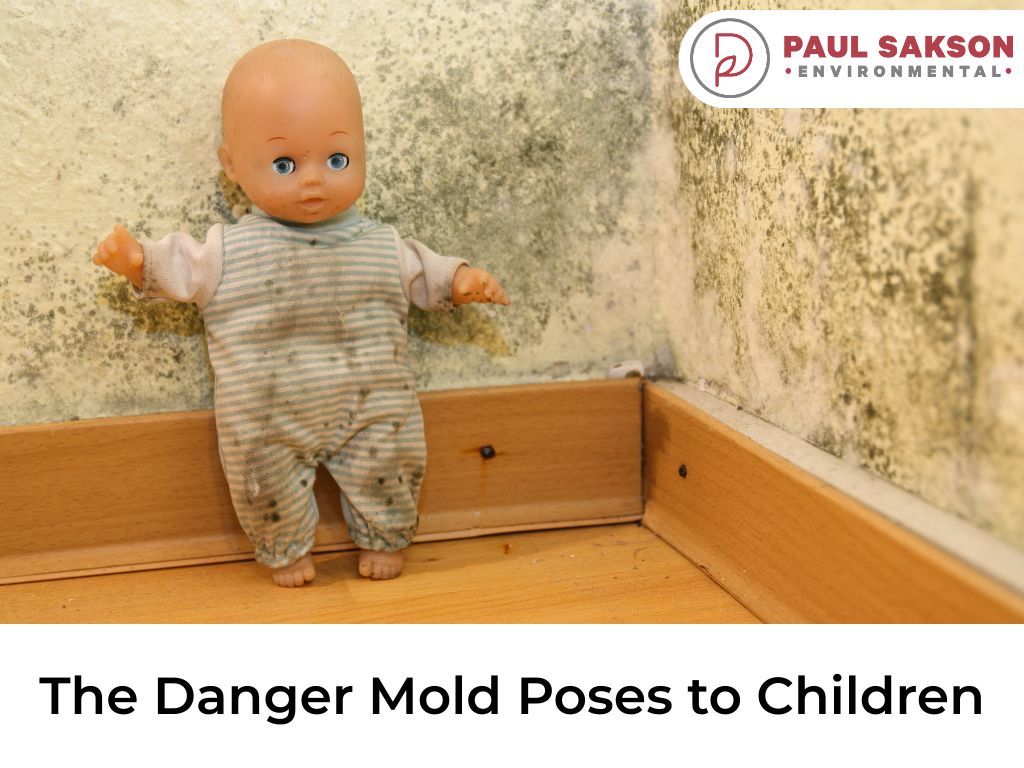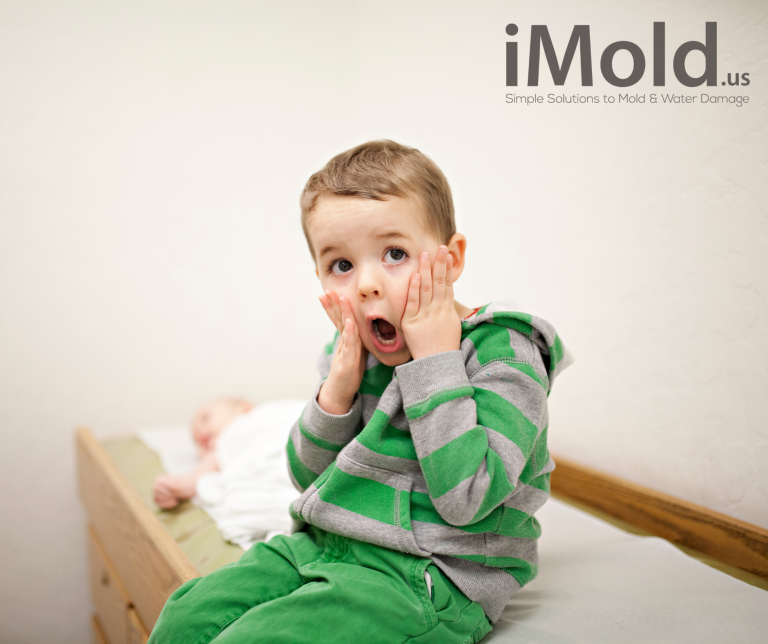If you have little ones at home, it’s important to be aware of the potential risks they may face, including mold exposure. Mold can be found in many households, and its presence can have adverse effects on your toddler’s health. In this article, we will explore the symptoms of mold exposure in toddlers and provide you with valuable tips on how to protect your little ones from this potential danger. So, let’s dive in and learn more about how to safeguard your child’s well-being!
Symptoms of Mold Exposure in Toddlers
Respiratory Symptoms
When toddlers are exposed to mold, they may experience a range of respiratory symptoms. These can include coughing, wheezing, and difficulty breathing. The presence of mold spores in the air can irritate the sensitive airways of young children, leading to these respiratory issues. If you notice your child having recurrent respiratory problems, it is important to consider mold exposure as a possible cause.
Allergic Reactions
Mold exposure can trigger allergic reactions in toddlers. They may develop symptoms such as sneezing, runny nose, congestion, or itchy and watery eyes. These allergic reactions occur because the immune system reacts to the presence of mold allergens in the air or on surfaces. Recognizing these symptoms can help you identify mold as a potential allergen affecting your child.
Skin Symptoms
In some cases, mold exposure can lead to skin symptoms in toddlers. These can include rashes, hives, or eczema-like patches. Mold spores can come into direct contact with the skin, causing an allergic reaction or irritation. If your child develops unexplained skin issues, it is worth considering whether mold exposure could be a contributing factor.
Eye and Ear Symptoms
Mold exposure can also impact a toddler’s eyes and ears. They may experience redness, itchiness, or irritation in the eyes, as well as ear infections or increased earwax production. Mold spores can easily come into contact with these sensitive areas, leading to discomfort and potential infections. If your child frequently complains about their eyes or ears, mold exposure may be a factor to consider.
Digestive Symptoms
In some cases, mold exposure can manifest as digestive symptoms in toddlers. These can include nausea, vomiting, or diarrhea. Mold can release mycotoxins, which are toxic substances that can be ingested by children when they accidentally consume contaminated food or drink. If your child consistently experiences digestive issues, it is important to explore possible mold exposure as a cause.
Neurological Symptoms
Mold exposure may also affect a toddler’s neurological health. They may experience headaches, difficulty concentrating, or memory problems. Mold toxins can have neurotoxic effects, affecting brain function and cognitive abilities. If your child displays neurological symptoms that cannot be attributed to other causes, mold exposure is worth considering as a potential culprit.
Skeletal Symptoms
Sometimes, mold exposure can manifest as skeletal symptoms in toddlers. They may experience joint pain, muscle aches, or even growth abnormalities. Mold toxins can affect the musculoskeletal system, leading to various skeletal issues. If your child experiences unexplained skeletal symptoms, it is important to consider mold exposure as a possibility and consult with a healthcare professional.
Behavioral Symptoms
Mold exposure can impact a toddler’s behavior and mood. They may become irritable, have difficulty sleeping, or exhibit changes in their mood. The presence of mold toxins in the environment can disrupt the balance of neurotransmitters in the brain, influencing behavior and emotions. If your child’s behavior seems affected and you suspect mold exposure, proactive measures should be taken.
Other Possible Symptoms
In addition to the aforementioned symptoms, mold exposure in toddlers can potentially lead to a range of other symptoms. These may include fatigue, frequent infections, sensitivity to light or sound, or even unexplained weight loss. Every child may react differently to mold exposure, and it is essential to pay attention to any unusual or persistent symptoms that arise.
Delayed Symptoms
It is important to note that some symptoms of mold exposure in toddlers may not appear immediately. Delayed symptoms can occur days or even weeks after exposure. This can make it challenging to connect the symptoms with mold. However, if your child’s health deteriorates or they develop new symptoms over time, it is crucial to consider the possibility of mold exposure and seek appropriate medical attention.

Protecting Your Little Ones
Identifying Mold in Your Home
To protect your toddler from mold exposure, it is important to be able to identify its presence in your home. Look for visible signs of mold growth, such as dark patches on walls, ceilings, or floors. Musty odors can also indicate mold. Additionally, keep an eye out for water stains or areas of dampness, as these can be breeding grounds for mold.
Prevention Measures
Preventing mold growth is key to protecting your toddler. Take steps to control moisture levels in your home by ensuring proper ventilation, especially in high-moisture areas like bathrooms and kitchens. Fix any leaks promptly, clean up spills or water damage immediately, and use dehumidifiers or air purifiers if necessary. Regularly cleaning and drying items like bath toys and shower curtains can also help prevent mold growth.
Cleaning and Removing Mold
If you discover mold in your home, it is important to clean and remove it properly. Wear protective gear, such as gloves and a mask, to avoid direct exposure to mold spores. Use a solution of water and detergent to scrub the affected area, then rinse and dry thoroughly. In cases of extensive mold growth, it may be necessary to seek professional help for safe removal.
Seeking Medical Attention
If you suspect that your toddler has been exposed to mold and they are experiencing symptoms, it is crucial to seek medical attention. A healthcare professional can evaluate your child’s condition, conduct any necessary tests, and provide appropriate treatment or management strategies. Early detection and intervention can help prevent further health complications.
Creating a Healthy Environment
Maintaining a healthy environment is essential for preventing mold exposure in toddlers. Keep your home clean and well-ventilated, ensuring that air circulates effectively. Use mildew-resistant products and materials whenever possible. Regularly inspect and maintain your home’s plumbing, roof, and insulation to prevent water intrusion. By creating a healthy environment, you can minimize the risk of mold growth and protect your child.
Regular Check-Ups
Regular check-ups with your child’s pediatrician are important for monitoring their health and development. Be sure to inform the healthcare provider about any concerns regarding mold exposure and any associated symptoms your child may be experiencing. This allows the doctor to track any potential health issues and provide necessary guidance or referrals to specialists if needed.
Educating Your Child
Teaching your child about the importance of cleanliness and hygiene can help prevent mold exposure. Explain the concept of mold and the potential health risks it poses. Encourage your child to wash their hands frequently, especially after playing outdoors or touching potentially contaminated surfaces. By instilling good hygiene practices, you empower your child to take an active role in protecting themselves.
Maintaining Good Hygiene
Maintaining good personal hygiene is crucial for minimizing mold exposure. Regularly clean and dry your child’s belongings, such as toys and bedding. Teach them to cover their mouth and nose when coughing or sneezing to prevent the spread of mold spores. Additionally, encourage your child to bathe or shower regularly to remove any potential mold spores that may adhere to their skin.
Ensuring Proper Ventilation
Proper ventilation is vital for reducing moisture levels and preventing mold growth. Open windows or use exhaust fans to improve air circulation, particularly in rooms prone to high humidity, such as bathrooms and laundry areas. Consider using air purifiers with HEPA filters to help remove mold spores from the air. Adequate ventilation helps create an inhospitable environment for mold and keeps your child’s living spaces healthy.
Encouraging Outdoor Activities
Spending time outdoors is not only beneficial for your toddler’s overall well-being but also helps reduce their exposure to mold. The outdoor environment generally has lower levels of mold compared to indoor spaces. Encourage your child to engage in outdoor activities such as playing in the park or taking nature walks. This allows them to breathe fresh air and enjoy a healthier environment away from potential mold sources.
By being vigilant, proactive, and taking appropriate measures, you can protect your little ones from mold exposure. Understanding the symptoms of mold exposure in toddlers and implementing prevention strategies will help ensure a safe and healthy environment for your child to grow and thrive in. Stay mindful of any changes in their health or behavior, and consult with medical professionals as needed to address any concerns.
